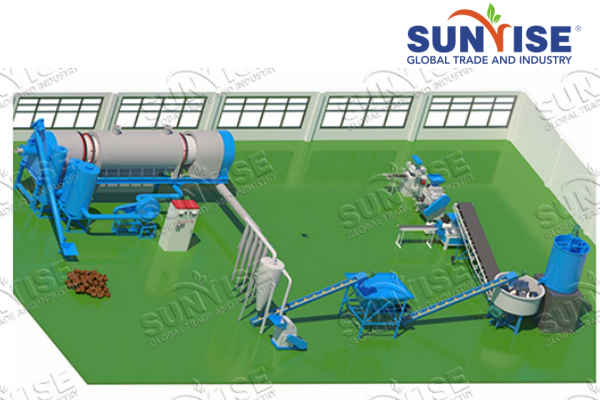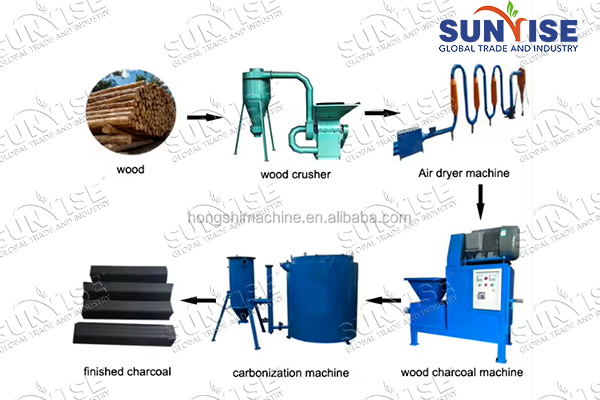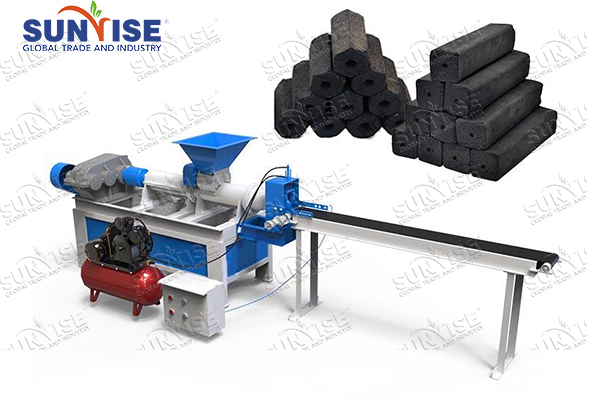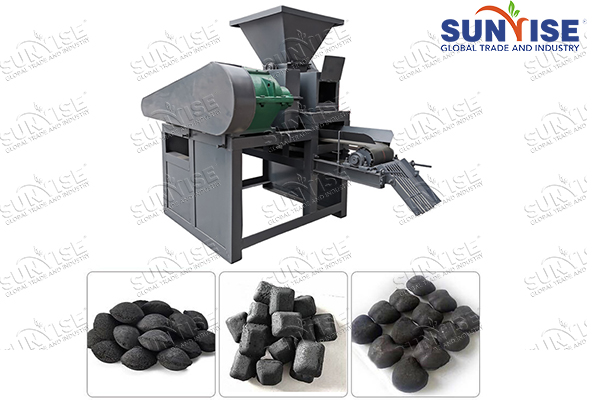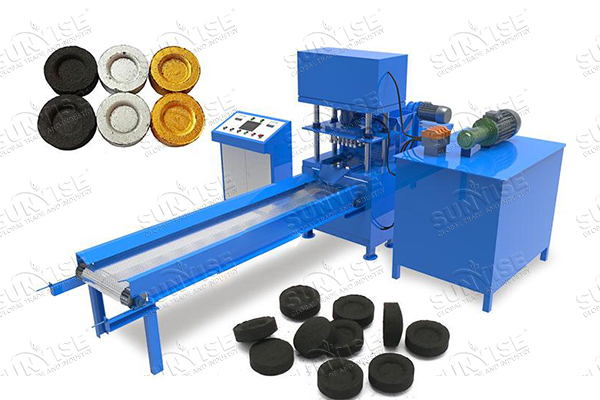Rice husk is the protective coat around rice seeds. It is a waste material that is obtained in tons during the rice harvesting season. And the most abundant components present in rice husk are cellulose, lignin, and silica. Due to the high percentage of lignin (natural binding material) and low water content, rice husk is a valuable raw material to make charcoal briquettes for household or industrial uses. इसके लिए, on 15th June 2024, a customer from Japan wanted to purchase a set of rice husk charcoal briquette machine. इस मामले में संचार के विशिष्ट विवरण निम्नलिखित हैं:
शीर्ष 2 rice husk charcoal briquette making method
यह जापानी ग्राहक चावल की भूसी बायोचार ब्रिकेट बनाने की विधि जानना चाहता था. सामान्य रूप से, वहाँ हैं चारकोल ब्रिकेट बनाने के दो तरीके चावल की भूसी से. एक कार्बोलाइजेशन भट्ठी के माध्यम से सीधे चावल की भूसी को चारकोल में कार्बोलाइज़ करना है, और फिर चावल की भूसी चारकोल को ब्रिकेट में संपीड़ित करना. अन्य चावल की भूसी को चावल की भूसी में सबसे पहले चावल की भूसी को संपीड़ित करना है, फिर चावल की भूसी ब्रिकेट को लकड़ी का कोयला में कार्बोलाइज करें.
Carbonization first & फिर गठन
This method is suitable for customers with sufficient budget. Because rice husks are very small and the only carbonizer suitable for this feed size is a निरंतर कार्बनकरण भट्ठी – 5-20 मिमी. आम तौर पर, rice husk as a fine particle material does not need to be further crushed, you can feed it directly. After that, you can use charcoal wheel grinder to make charcoal powder. अंत में, there are four चारकोल ब्रिकेट मेकिंग मशीन for your choice to produce rice husk biochar briquettes.
पहले गठन & फिर कार्बनकरण
The नमी चावल की भूसी तक है 15%. तथापि, यह सुझाव दिया जाता है कि कच्चे माल में होना चाहिए 8% को 10% इसमें नमी. इसलिए आपको नमी की मात्रा को कम करने के लिए एक ड्रायर की आवश्यकता है. और चावल की भूसी ब्रिकेटिंग की लागत को कम करने के लिए, इसे वाष्पीकरण के माध्यम से नमी की सामग्री को कम करने के लिए सूर्य के प्रकाश के नीचे भी रखा जा सकता है. चूंकि चावल की भूसी आकार में छोटी होती है, इसलिए कुचलने की कोई जरूरत नहीं है. सूखने के बाद, आप इसे सीधे खिला सकते हैं चारकोल एक्सट्रूडर मशीन. अंत में, उपयोग के माध्यम से फहराने वाली कार्बनकरण मशीन या बैच प्रकार कार्बनकरण भट्ठी, आप चावल की भूसी बायोचार ब्रिकेट प्राप्त कर सकते हैं.
What is the price of rice husk charcoal briquette plant?
Then the customer from Japan also wanted to know the price of rice husk biochar briquette plant. And the cost of rice husk charcoal briquette production usually varies according to capacity, equipment configuration and many other factors. Here we will show you the prices of 500-1000 kg/h small scale rice husk charcoal briquette production line, 1-10 t/h rice husk biochar briquette making line and 10-30 t/h large scale rice husk charcoal briquette manufacturing system for your reference.
500-1000 किलोभास
- 600-1050㎡
- (Reference)
1-10 वां
- 1250-3000㎡
- (Reference)
10-30 वां
- 3000-4000㎡
- (Reference)
Is there a lower investment rice husk charcoal briquette making plan?
बिल्कुल. The above is the price of the highest configuration business plan machines. इसके अलावा, we can offer you two basic designs. उदाहरण के लिए, for one basic carbonization furnace + चारकोल पहिया चक्की + charcoal briquette maker, you only need to prepare $5,000-$23,000 (carbonization first & then forming method). As for another design, with charcoal extruder + hoisting or बैच प्रकार कार्बनकरण भट्ठी (forming first & then carbonization method). के बारे में $ 8,000-$23,000.
What is the use of rice husk charcoal briquette from Sunrise machine produced?
अंत में, Japanese client prepare to get more profits from these rice husk biochar briquettes. So he asked us the use of rice husk charcoal briquette. In addition to being used as fuel, rice husk charcoal briquette is also widely used in industry and agriculture.
Rice husk charcoal briquette production line is an ideal choice for beginners production. But if you want to produce small scale rice husk biochar briquette, you can choose our small scale rice husk charcoal briquette production plan.
